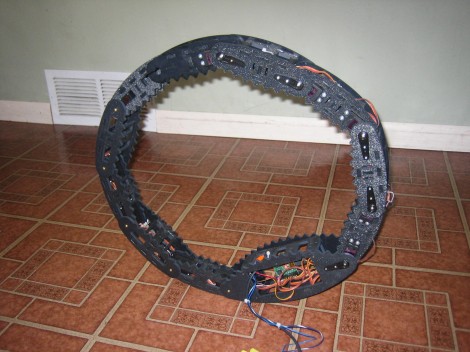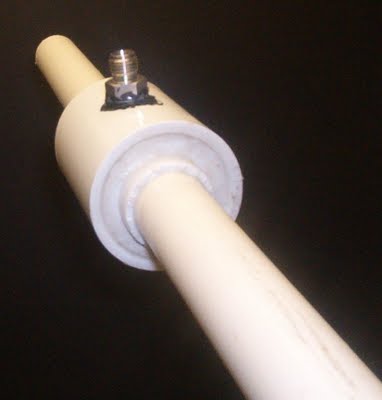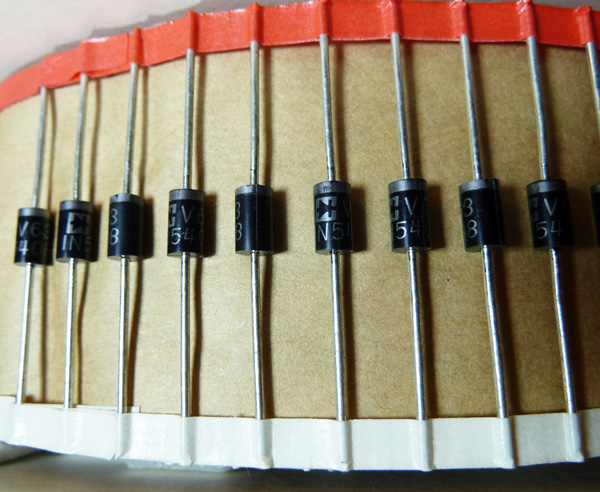
A lot of 3D printing and a many servo motors went into this snake-like robot, and it’s only about half of what [Toby Baumgartner] plans to accomplish. In this orientation the snake is rolled into a circle, and apparently some special movements in the segments allow it to roll around like this. He compares it to a tank tread without the tank attached to it. Notice that each link is rounded on the outside. When the snake opens itself up, the toothed inside of the links contacts the ground for added traction.
It looks like eventually the larger link at the bottom will be about three times as wide. This will make room for him to mount a second ring of links. The idea is that the larger link will act as the body and this can unfold itself into a quaruped. Motors that allow the segments to pivot side to side would make it something like a four-legged spider bot.
















